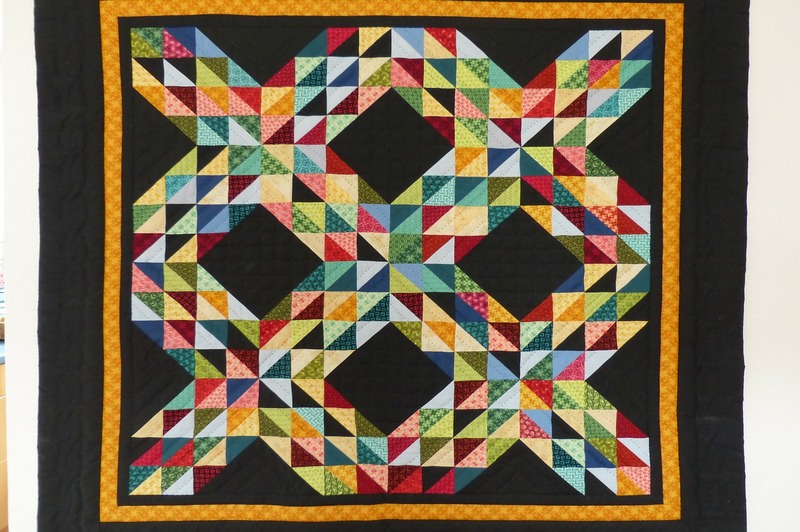After getting finished making your blanket, wouldn’t it be nice to learn what is blanket binding and how it works as a part of your blanket?

As fantastic as it is to have something that you made yourself, it would be even more perfect to use it for a long time.
Our blankets accompany us whenever we are to get some rest when we’re happy or sad; they are ever-present when we need comfort.
For you to level up this comfort and get your blanket far from getting frayed and unraveled, there are some options you can try yourself.
One of the options there is adding a blanket binding.
This article will discuss what it is, why it’s become so popular, and how you can add one to your blankets.
What Is Blanket Binding?
Blanket bindings are those lovely fabrics attached around borders at the edges of blankets.
They are made with different kinds of textiles, attached using various techniques; some are antiques of tradition and some up to date.
Blanket binding has been done for a long time, and it has become a part of the culture of some countries.
Blanket binding has come a long way from traditional and cultural assets to modern-day design and style.
As history would suggest, older civilizations practiced specific systems in their society.
The richest, most popular, and distinguished families get the best items that were usually made intricately.
Their blanket bindings are made with the best materials, mostly satin and silk binds.
You might have seen them attached on blankets on store shelves, or perhaps they’re present on the blankets you have at home.
Blanket binding has also moved far beyond satin fabrics. They are also made with other textiles and even crochet and knits.
Tailors have been experimenting with their texture combinations, and more stores are offering them in different platforms and locations for convenience.
What is the use of blanket binding?
Blanket bindings mainly serve as protection for your blanket.
Since the edges of the blankets fray without a proper sewn lock, blanket binding covers these parts to prevent any fraying.
It also protects the stitches on the border of the blanket from getting tugged and cut off.
Another thing that these blanket binds do is add to and complete the look of the blanket.
Since they’re found on the edges, blanket binds can highlight the design and texture of the blanket.
They also give the blanket a smooth finish and a regal feel.
How To Bind Your Blanket?
Most of the binding cloths you can buy are already cut and folded to fit all average blankets.
However, if your blanket is also DIY, having irregular dimensions or using a binding fabric from leftovers, you’ll have to do the measurements, cutting, and folding yourself.
Here are some steps you can follow for your binding:
Step #1. Measure all the blanket sides and record
Using a tape measure or any measuring tool, measure each of the sides of your blanket, from one tip to the other.
Record these dimensions on a piece of paper.
Make sure that you do the measurements precisely since this is going to be used for the binding.
Step #2. Use the previous blanket dimensions and cut the binding fabric
Using the dimensions you previously recorded, the next step is to add the measurement for the border.
You can use any width for the binding, but we suggest that you limit it from one to two inches.
If you choose a two-inch width, then you’ll have to add four inches on each side and a total of two inches for a one-inch width.
Add up all the side measurements, including that of the blanket and the binding fabric. This will be the total length of the binding cloth that you’ll need.
The width of this length would be two-inch (for a 1inch bind) or four inches (for a 2inch bind).
You can add some extra on the fabric measurement for allowance before you cut it so it doesn’t fall short.
Step #3. Pin the bind to the blanket and sew it
When you finish cutting the fabric for the bind, you can pin it to the blanket.
Fold the edge of the binding fabric inward to the blanket before pinning it. You have to do this on both sides to make the edges seamless.
Do the pinning once at least every five inches of the blanket fabric to keep the bind tight and fitted.
Remove any crease before pinning each section since this might cause the binding material to end up short for the blanket.
After the pins are done, you can start sewing the binding fabric into the blanket by hand or using a sewing machine.
You’ll have to sew the bind simultaneously on both sides, so your pins must also be precise.
Sew it from top to bottom until you cover the entire blanket, and you’re done!
Conclusion
It’s been a ride learning what is blanket binding, but we hope you were able to absorb it well.
There’s a lot more to this blanket part than just being a border, and it would be fantastic if you also noticed that from reading this.
Try doing it yourself, and we’re sure you’re going to appreciate it!
